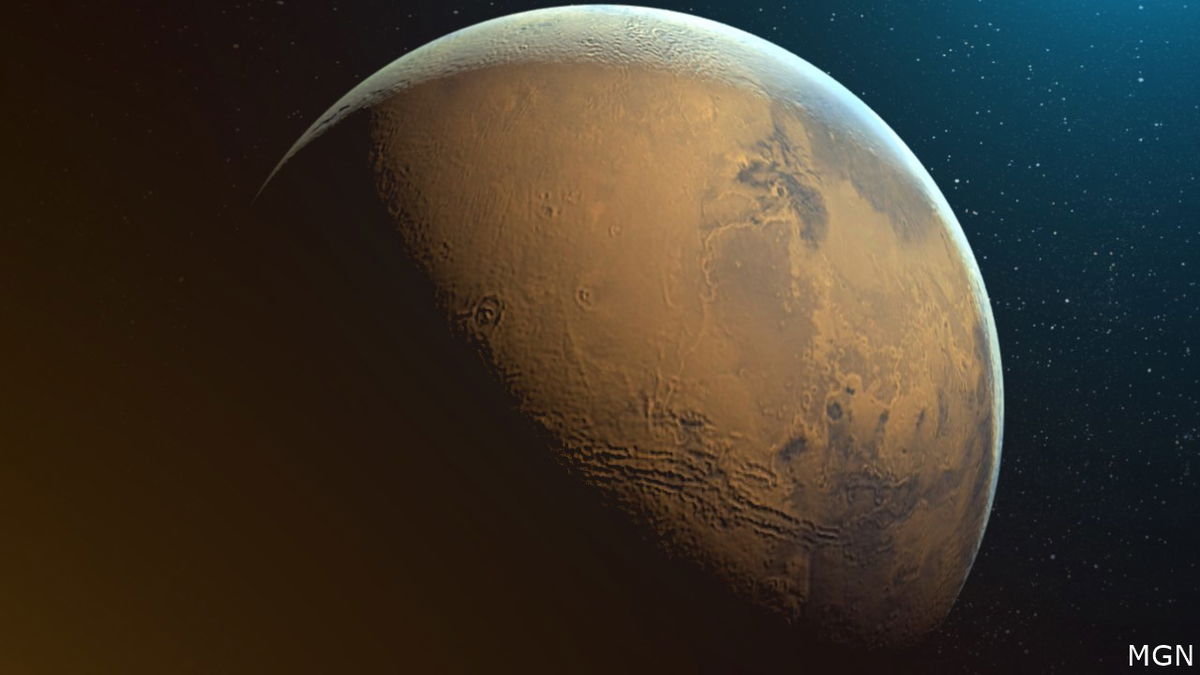Data from InSight lander leads scientists to conclude Mars has liquid water

Data collected on Mars' planetary crust by the InSight lander has led scientists to conclude the planet has stores of liquid water underground, a report revealed today.
Analysis led by Vashan Wright, a geophysicist at UC San Diego's Scripps Institution of Oceanography, provides evidence that the planet still has liquid water in addition to that frozen at its poles.
"Understanding the Martian water cycle is critical for understanding the evolution of the climate, surface, and interior,'' Wright said. "A useful starting point is to identify where water is and how much is there."
If that conclusion is true, it sets the stage for new research considering the planet's habitability and continuing a search for life that exists on a place other than Earth.
"Mars once had liquid water on its surface, in rivers and lakes, and possibly oceans,'' Wright told City News Service. "A long standing open question is what happened to that surface liquid water.
"Our findings suggest that the liquid water must have percolated from shallow to greater depths during a time when the planet was warmer. The presence of water does not signify that there is life, but water is thought to be an important ingredient for life. We know that life can exist in deep subsurface of the Earth, where there is water present.''
The study appeared Monday in the journal Proceedings of the National Academy of Sciences. The Canadian Institute for Advanced Research, the National Science Foundation and the US Office of Naval Research supported the work. Besides Wright, study authors are Matthias Morzfeld from Scripps Oceanography and Michael Manga from UC Berkeley.
InSight does not have the ability to drill to kilometer depths, and Mars is too cold for liquid water to exist within the upper eight kilometers of the surface, Wright said.
"It would be challenging to access liquid water in the Martian water mid crust,'' he told City News Service. "For example, drilling in the Earth subsurface often involves using some fluid to make the drilling process easier. Such a fluid is not readily available on Mars."
However, his team used data that InSight collected during a four-year mission ending in 2022 -- collected from the ground directly beneath the lander -- such as the speed of Marsquake waves from which scientists can infer what substances reside beneath the surface.
According to the authors, the data were fed into a model informed by a mathematical theory of rock physics. From it, the researchers determined that the presence of liquid water in the crust most plausibly explained the data.
"While available data are best explained by a water-saturated mid- crust, our results highlight the value of geophysical measurements and better constraints on the mineralogy and composition of Mars' crust,'' the authors wrote.
So while the findings are exciting, any large-scale projects as a result of liquid water -- such as terraforming, or making the planet habitable for humans -- have a bevy of problems that would need to be solved first.
"There are other challenges to terraforming, including that Mars does not currently have a strong global magnetic field that would protect its atmosphere and liquid water on its surface,'' Wright said. "The loss of the planet's magnetic field is thought to have played a role in the loss of past liquid water on its surface."



